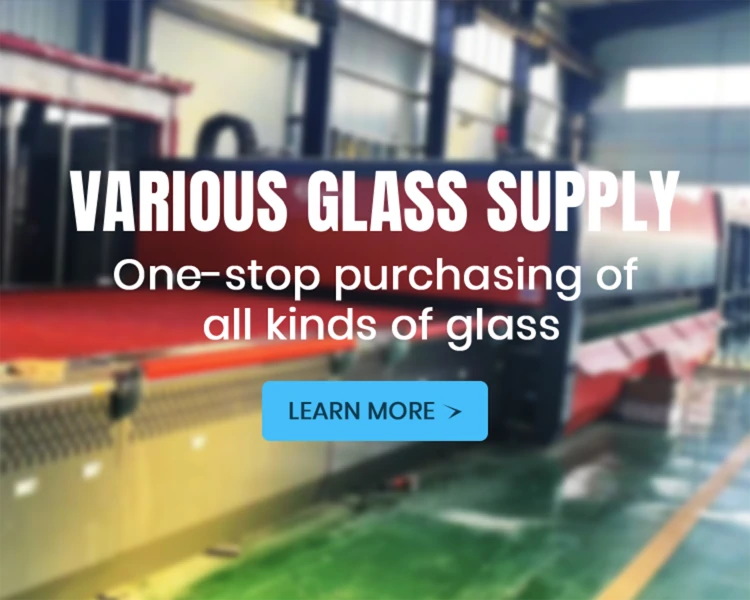Laminated and Tempered Glass A Comprehensive Overview
Laminated and tempered glass are two of the most prominent types of safety glass used in a wide range of architectural, automotive, and industrial applications. Understanding the characteristics, benefits, and differences between these two types of glass is essential for builders, designers, and consumers alike. This article delves into the manufacturing processes, applications, benefits, and limitations of laminated and tempered glass.
What is Laminated Glass?
Laminated glass is formed by sandwiching a layer of polyvinyl butyral (PVB) or ethylene-vinyl acetate (EVA) between two or more layers of glass. This process creates a robust safety feature when broken, the interlayer holds the glass shards together, preventing them from shattering and causing injury. The manufacturing process involves autoclaving the glass and interlayer under heat and pressure, which permanently binds the layers together.
Applications of Laminated Glass
Laminated glass is often utilized in areas where safety is a primary concern. Common applications include
1. Architectural Installations Laminated glass is widely used in skylights, glass facades, and railings to enhance safety and aesthetics.
2. Automotive Industry Windshields are typically made from laminated glass, offering protection against accidents and reducing the risk of glass shattering.
3. Security Laminated glass is used in bank windows, jewelry stores, and other locations that require high levels of security against break-ins.
4. Acoustic Control The interlayer can also help reduce noise pollution, making it an excellent choice for buildings situated in high-traffic areas.
What is Tempered Glass?
Tempered glass, on the other hand, is produced through a heating and rapid cooling process known as tempering. The glass is heated to approximately 620 degrees Celsius and then cooled quickly to increase its strength. This treatment process gives tempered glass up to five times the strength of standard glass, making it less likely to break under impact.
Applications of Tempered Glass
laminated and tempered glass
Tempered glass is versatile and finds its use in various applications, including
1. Shower Doors The strength and safety features of tempered glass make it an ideal choice for bathroom installations.
2. Doors and Windows Many modern homes use tempered glass for sliding doors and large windows due to its durability and safety.
3. Furniture Glass tables and shelving often feature tempered glass for both aesthetic appeal and durability.
4. Glass Partitions In office spaces, tempered glass partitions create a modern look while ensuring safety.
Benefits of Laminated and Tempered Glass
Both laminated and tempered glass have unique advantages, making them suitable for different applications
- Laminated Glass
- Safety In the event of breakage, the glass shards won’t scatter, significantly reducing the risk of injury.
- UV Protection The interlayer can block up to 99% of harmful UV rays, protecting interiors from fading.
- Sound Insulation The PVB interlayer provides sound dampening, making it ideal for noisy environments.
- Tempered Glass
- Increased Strength The tempering process enhances the structural integrity, allowing it to withstand high impacts.
- Thermal Resistance Tempered glass can endure extreme temperature changes, making it suitable for various climate conditions.
- Safety on Breakage While it does shatter into small, blunt pieces when broken, reducing the risk of serious injuries, tempered glass is still highly durable compared to standard glass.
Limitations
While both types of glass are highly advantageous, they do have limitations. Laminated glass can be heavier and more expensive than standard glass, affecting structural design and budget. Tempered glass, while strong, can only withstand a certain amount of impact and may not offer the same level of safety against sharp objects.
Conclusion
In conclusion, laminated and tempered glass are essential materials in modern construction and design. Each type of glass has its unique properties and benefits, catering to various needs and preferences. When selecting glass for a specific application, understanding these differences is crucial for ensuring safety, durability, and aesthetic appeal. Whether for architectural purposes, automotive needs, or furniture design, both laminated and tempered glass offer significant advantages to enhance functionality and safety.
 Afrikaans
Afrikaans  Albanian
Albanian  Amharic
Amharic  Arabic
Arabic  Armenian
Armenian  Azerbaijani
Azerbaijani  Basque
Basque  Belarusian
Belarusian  Bengali
Bengali  Bosnian
Bosnian  Bulgarian
Bulgarian  Catalan
Catalan  Cebuano
Cebuano  Corsican
Corsican  Croatian
Croatian  Czech
Czech  Danish
Danish  Dutch
Dutch  English
English  Esperanto
Esperanto  Estonian
Estonian  Finnish
Finnish  French
French  Frisian
Frisian  Galician
Galician  Georgian
Georgian  German
German  Greek
Greek  Gujarati
Gujarati  Haitian Creole
Haitian Creole  hausa
hausa  hawaiian
hawaiian  Hebrew
Hebrew  Hindi
Hindi  Miao
Miao  Hungarian
Hungarian  Icelandic
Icelandic  igbo
igbo  Indonesian
Indonesian  irish
irish  Italian
Italian  Japanese
Japanese  Javanese
Javanese  Kannada
Kannada  kazakh
kazakh  Khmer
Khmer  Rwandese
Rwandese  Korean
Korean  Kurdish
Kurdish  Kyrgyz
Kyrgyz  Lao
Lao  Latin
Latin  Latvian
Latvian  Lithuanian
Lithuanian  Luxembourgish
Luxembourgish  Macedonian
Macedonian  Malgashi
Malgashi  Malay
Malay  Malayalam
Malayalam  Maltese
Maltese  Maori
Maori  Marathi
Marathi  Mongolian
Mongolian  Myanmar
Myanmar  Nepali
Nepali  Norwegian
Norwegian  Norwegian
Norwegian  Occitan
Occitan  Pashto
Pashto  Persian
Persian  Polish
Polish  Portuguese
Portuguese  Punjabi
Punjabi  Romanian
Romanian  Russian
Russian  Samoan
Samoan  Scottish Gaelic
Scottish Gaelic  Serbian
Serbian  Sesotho
Sesotho  Shona
Shona  Sindhi
Sindhi  Sinhala
Sinhala  Slovak
Slovak  Slovenian
Slovenian  Somali
Somali  Spanish
Spanish  Sundanese
Sundanese  Swahili
Swahili  Swedish
Swedish  Tagalog
Tagalog  Tajik
Tajik  Tamil
Tamil  Tatar
Tatar  Telugu
Telugu  Thai
Thai  Turkish
Turkish  Turkmen
Turkmen  Ukrainian
Ukrainian  Urdu
Urdu  Uighur
Uighur  Uzbek
Uzbek  Vietnamese
Vietnamese  Welsh
Welsh  Bantu
Bantu  Yiddish
Yiddish  Yoruba
Yoruba  Zulu
Zulu 

